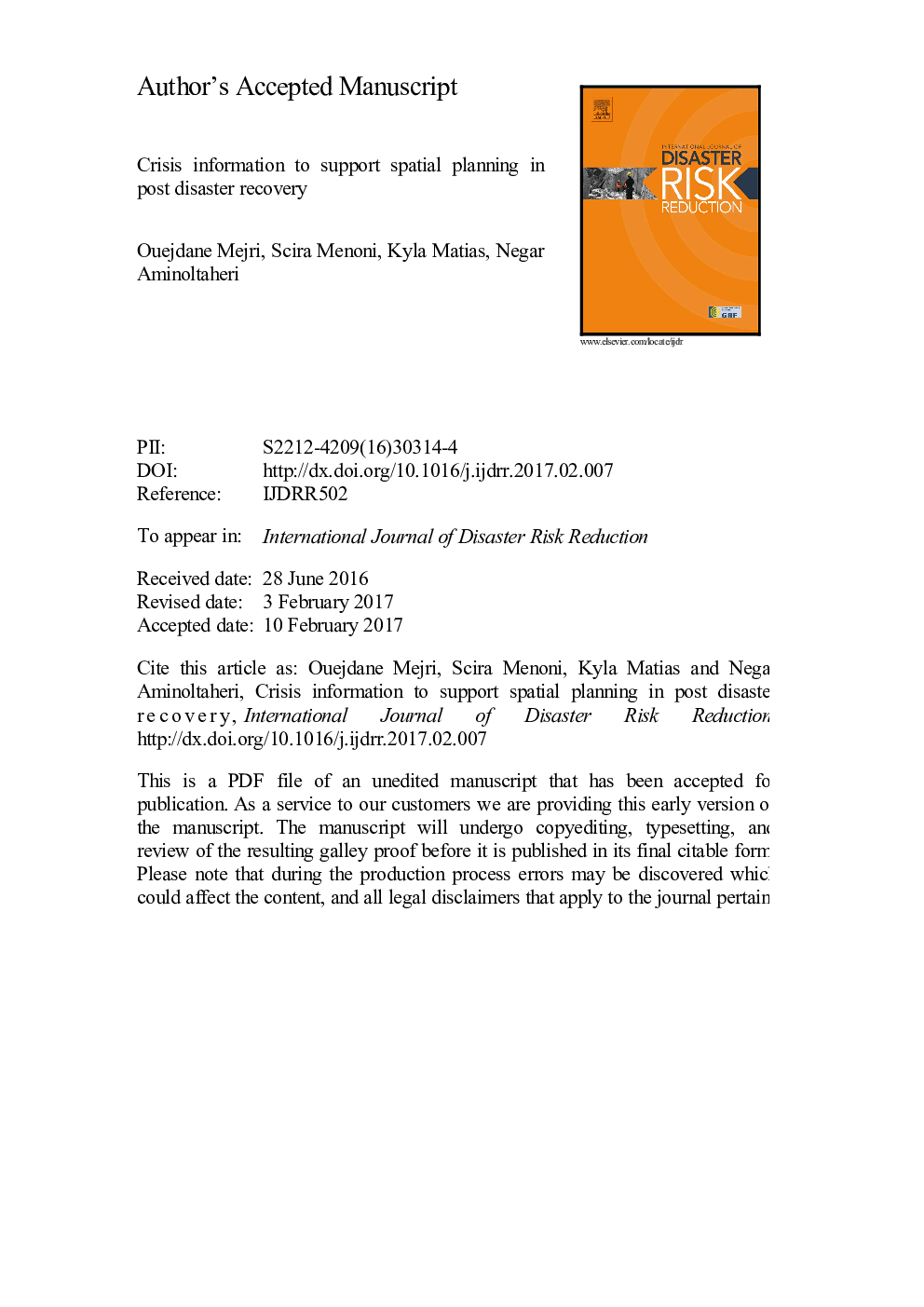| Article ID | Journal | Published Year | Pages | File Type |
|---|---|---|---|---|
| 5116077 | International Journal of Disaster Risk Reduction | 2017 | 34 Pages |
Abstract
In this paper we propose to explore the complex node of post disaster reconstruction, knowledge and data necessary to support spatial planning, and new information technologies. The methodology that is illustrated assumes that post-event damage assessments are useful to verify to what extent hazard and risk assessments that were available to planners to make decisions before the disaster were correct and if they were actually used as a basis for locational and zoning choices. Our contribution is aimed at the creation and design of knowledge bases accounting for the dynamic evolution of disasters. New web based technologies provide the opportunity to collect and analyse dynamic territorial crisis data using crowdsourcing and crowdmapping platforms. The proposed methodology permits to sort and classify a very large set of different types of data generated through the web. Semantic conceptualization using ontologies is performed to identify and select the information produced during the emergency that can support spatial planning in the post disaster reconstruction. The city of Tacloban in the Philippines, affected by the Super Typhoon Haiyan in November 2013 constitutes the test case for applying the methodology that has been developed.
Related Topics
Physical Sciences and Engineering
Earth and Planetary Sciences
Geophysics
Authors
Ouejdane Mejri, Scira Menoni, Kyla Matias, Negar Aminoltaheri,
